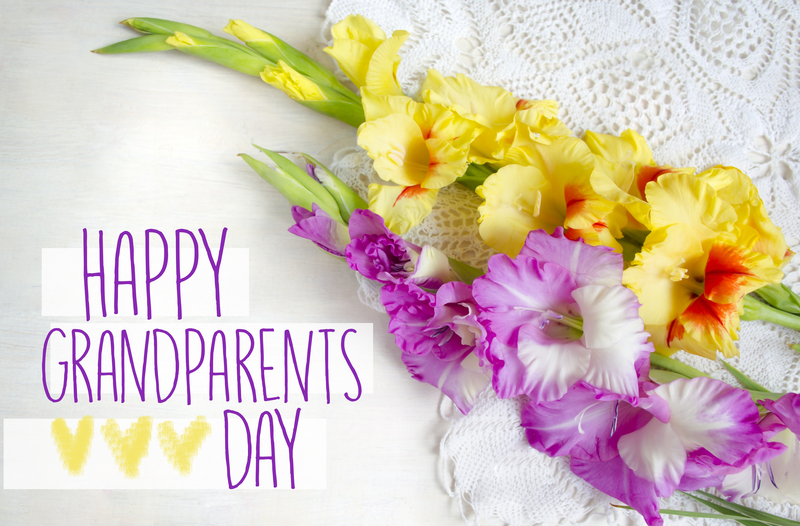Caring for Hydrangeas: A Beginner's Guide
Posted on 17/08/2025
Caring for Hydrangeas: A Beginner's Guide
Hydrangeas are enchanting flowering shrubs that have captured the hearts of gardeners around the world. Their showy blooms, lush foliage, and diverse varieties make them a popular choice for landscaping, container gardening, and floral arrangements. For beginners, learning how to nurture these beauties can seem daunting--but with the right knowledge and a little attention, caring for hydrangeas can be a rewarding and straightforward experience.
Getting to Know Hydrangeas: An Overview
The hydrangea plant is native to Asia and the Americas. Their popularity stems not just from their breathtaking clusters of flowers, but also from their hardiness and adaptability. As a beginner, you'll be pleased to know that growing hydrangeas doesn't require a green thumb--just some fundamental knowledge about their needs and preferences.
Main Types of Hydrangeas
- Bigleaf hydrangeas (Hydrangea macrophylla): Known for colorful blooms that can be pink, blue, or purple.
- PeeGee hydrangeas (Hydrangea paniculata): Noted for their cone-shaped white flowers that often turn pink or greenish as they mature.
- Oakleaf hydrangeas (Hydrangea quercifolia): Recognized by their unique oak-shaped leaves and white flower clusters.
- Smooth hydrangeas (Hydrangea arborescens): Popular for their large round often white blooms on strong stems.
- Climbing hydrangeas (Hydrangea petiolaris): Adds vertical interest with vines that scale walls and structures.
The first step to caring for hydrangeas is selecting the right variety for your garden and understanding its individual needs.

How to Grow Hydrangeas: Planting and Positioning
Choosing the Right Location
Hydrangeas thrive in locations that provide the perfect balance of sunlight and shade. Most varieties prefer:
- Morning sun with afternoon shade, especially in hot climates.
- Sheltered spots, away from wind exposure, which can damage leaves and flowers.
- Soil that is moist but well-draining.
Soil Preparation: The Foundation of Healthy Hydrangeas
If you want to master hydrangea plant care, start with the soil. These plants love rich, loamy, slightly acidic soils but are adaptable. To prepare:
- Dig in organic matter such as compost or well-rotted manure to enrich your soil.
- Test soil pH with an at-home kit; a pH between 5.5 and 7.0 is usually ideal, but some types vary in color depending on soil acidity.
- Ensure proper drainage by avoiding low spots where water pools after rain.
Planting Hydrangeas: Step by Step
- Dig a hole 2-3 times as wide as the root ball, but only as deep.
- Loosen the root ball gently before placing into the hole.
- Backfill with a mix of garden soil and compost.
- Firmly press the soil down and water thoroughly to settle roots.
- Mulch around the plant with bark or straw to retain moisture and deter weeds.
Tip: For those in colder climates, early spring or fall is the best time for planting hydrangeas.
Watering Your Hydrangeas: Ensuring Adequate Moisture
One of the most common mistakes when caring for hydrangeas is improper watering--either too much or too little. Hydrangeas have shallow roots and require consistent moisture, especially during hot or dry spells. Here's how to keep your hydrangeas happy:
- Water deeply a few times a week rather than shallow daily watering.
- In the first year, keep soil consistently moist but not soggy.
- Mulching helps retain moisture and keeps roots cool in summer.
- In containers, hydrangeas may need to be watered more frequently, especially in hot weather.
Note: Early morning is the best time to water, minimizing evaporation and reducing the risk of mildew.
Fertilizing Hydrangeas: Feeding for Healthy Growth
Proper fertilization is essential when growing hydrangeas. Over- or under-fertilizing can lead to disappointing blooms or weak growth. Here's what to keep in mind:
- Apply a balanced, slow-release fertilizer in spring when new growth starts.
- Too much nitrogen can lead to lush foliage but few flowers; use a formula formulated for flowering shrubs.
- Follow package instructions for application rate and timing.
- In mid-summer, a light repeat application can boost continued blooming (except for late-flowering varieties).
Pruning Hydrangeas: Timing and Tips for Better Blooms
Effective pruning is an important part of hydrangea care, but the approach varies by type:
When to Prune
- Bigleaf and oakleaf hydrangeas: Prune immediately after flowering (late spring to early summer), as they form blooms on old wood (last year's growth).
- PeeGee and smooth hydrangeas: Prune in late winter or early spring, as they bloom on new wood (current year's growth).
How to Prune
- Remove spent flowers and dead wood to tidy up the plant.
- Thin out older stems at ground level to improve airflow and encourage vigorous blooms.
- Avoid pruning too severely; most types only need light shaping unless overgrown.
Pro Tip: Use sharp, sterilized pruning shears to prevent disease transmission.
Changing Hydrangea Flower Color: The Science of pH
One remarkable feature of certain hydrangea varieties is their ability to change bloom color based on soil pH. This mostly applies to bigleaf hydrangeas (Hydrangea macrophylla). Here's how you can influence color through hydrangea plant care:
- Blue flowers: Achievable with an acidic soil (pH below 6). Amend with garden sulfur or aluminum sulfate.
- Pink or red flowers: Favored by alkaline soils (pH above 7). Add lime to your soil to raise pH.
Note: White hydrangeas generally remain white regardless of soil pH.
Protecting Hydrangeas from Pests and Diseases
Although hydrangeas are generally hardy, they can be affected by pests or diseases, especially if conditions are not ideal. Here's what to look for:
- Common pests: Aphids, spider mites, and scale insects. Treat with insecticidal soap or horticultural oil if necessary.
- Fungal issues: Powdery mildew, leaf spot, and root rot. Ensure good air circulation, avoid wetting leaves, and plant in well-draining soil.
- Slugs and snails: These can damage tender leaves. Use organic slug pellets or beer traps.
Regular inspection is key to maintaining a healthy hydrangea garden. Early intervention prevents small problems from becoming big headaches.
Winter Care for Hydrangeas: Keeping Your Plants Safe
Winter care varies with climate and hydrangea type. In harsh winter regions, providing protection ensures your hydrangeas will bounce back beautifully in spring:
- Apply a thick layer (2-4 inches) of mulch or straw around the base in late fall.
- For bigleaf and oakleaf hydrangeas, consider wrapping with burlap or covering with leaves to protect buds from frost damage.
- Container hydrangeas can be moved into an unheated garage for the winter.
Remember: Avoid pruning in the fall, which can expose tender growth to cold damage.
Hydrangea Care in Containers: Tips for Small Gardens
If you're limited on space, caring for hydrangeas in pots is a perfect solution. Choose compact varieties like 'Cityline' or 'Mini Penny'. The essentials of hydrangea plant care in pots are:
- Use a pot with drainage holes and high-quality, moisture-retentive potting mix.
- Water more often, as pots dry out faster than garden beds.
- Fertilize lightly during the growing season.
- Move containers to a sheltered spot during extreme weather.
Hydrangea Care FAQs: Quick Answers for Beginners
- Why isn't my hydrangea blooming? Most common reasons include pruning at the wrong time, too much shade, or excessive nitrogen fertilizer.
- Can I plant hydrangeas in full sun? Some varieties (like paniculata) tolerate more sun, but most prefer some shade, especially during hot afternoons.
- How tall do hydrangeas get? Depending on the type, mature plants range from 2 to 8 feet tall (or more for climbing varieties).
- When do hydrangeas bloom? Most types flower from late spring through summer, with some extending into early fall.
- Do hydrangeas attract pollinators? Yes! Their blooms are attractive to bees, butterflies, and other beneficial insects.

Design Ideas: Showcasing Hydrangeas in Your Garden
Hydrangeas add bold color and texture to garden landscapes. Try these inspiring design ideas:
- Cottage gardens: Pair hydrangeas with roses, foxglove, and lavender for an old-fashioned charm.
- Formal hedges: Use hydrangeas as low-maintenance, spectacular flowering borders along paths or driveways.
- Container groupings: Mix dwarf varieties in containers for patios or shaded balconies.
- Woodland settings: Plant oakleaf hydrangeas beneath tall trees where their shade tolerance shines.
- Cut flower gardens: Grow hydrangeas for fresh or dried floral arrangements.
Conclusion: Hydrangea Care Made Easy for Beginners
With the right approach, caring for hydrangeas can be simple and immensely satisfying. Remember to:
- Select the appropriate variety for your climate and garden style.
- Choose the best location with suitable light and soil conditions.
- Water and mulch consistently to maintain soil moisture.
- Fertilize smartly and prune according to type for glorious blooms.
- Protect from pests, diseases, and harsh weather for robust health.
Hydrangeas reward even beginning gardeners with spectacular flowers and year-round beauty. Whether you're starting a new hydrangea garden bed or growing a lush potted specimen, follow these beginner's hydrangea care tips and you'll soon enjoy an effortlessly elegant garden display.
Latest Posts
Caring for Hydrangeas: A Beginner's Guide
Top Picks: The Most Delightful Birthday Blooms
Discover the Flower That Reflects Your Unique Personality





